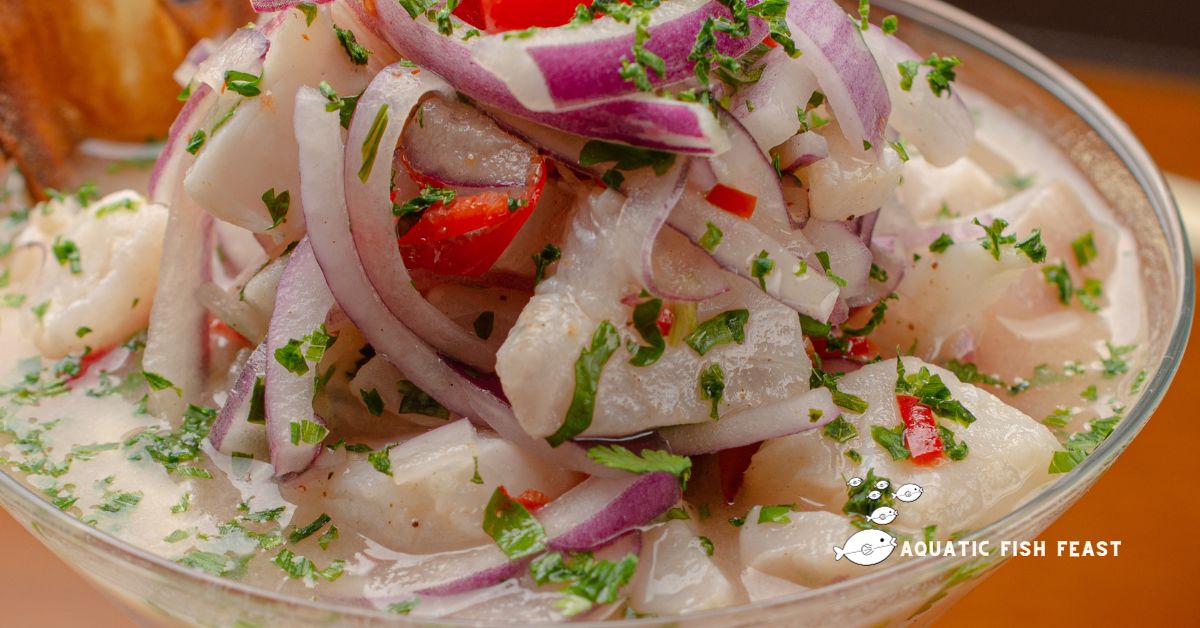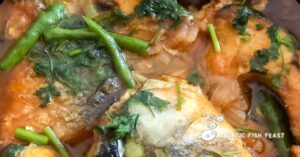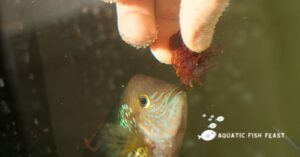Do you want to know which fish for ceviche? Yes, I want to know which fish are suitable for ceviche. White fish, such as sea bass, sole, and halibut, are often used in ceviche. Shellfish lovers can also use shrimp or scallops.
Not all fish are used for ceviche because they hardly blend well with citrus marinade.
In this article, I will discuss everything you need to know about fish that can be used for ceviche and more.
Now, let’s get started.
Table of Contents
Which Fish For Ceviche
As you may already know, or for those new to ceviche, let me explain it. Ceviche is a popular meal in several Latin American countries, particularly around the shore.
It uses raw fish or shellfish marinated in lime or lemon juice, onions, salt, cilantro, and chili peppers.
Citrus juice’s acid “cooks” fish, making it hard and opaque. Cold ceviche is served with avocado and tomatoes.
They are very refreshing and useful in warm climates because to their fresh and tart flavor.
Understanding Fish Varieties for Ceviche
Choosing the right fish for ceviche depends on the type of fish. Not all fish are used for ceviche due to their flavor and composition.
Different varieties of this fish add their taste and texture to the meal. For each fish, the dish’s taste and texture will vary.
Let us explore some of the most popular choices:
1. Tilapia: This is a beginner-friendly Option for simple classic ceviche recipes.
Because of the mild flavor and cost, tilapia has become a choice for new ceviche enthusiasts.
Another thing about Tilapia for ceviche is that they have a firm texture, which ensures it holds up well in the citrus marinade, allowing you a good experience.
2. Snapper: Snapper is a delicious type of fish. It’s sweet, with a slightly nutty flavor, and firm. It has a fantastic, unique taste and complements the acidity of the lime juice to create a harmonious balance of flavors.
3. Halibut: This is another wonderful choice of fish that works well with ceviche. They produce a delicate flavor and buttery texture of halibut, adding a touch of luxury to your ceviche creation.
The Halibut has a tender flesh that allows it to absorb the mixture of citrus marinade easily. And this is what provides a truly exquisite dining experience.
4. Mahi Mahi: The Bold and versatile, perfect for adventurous palates.
Mahi Mahi also has a firm texture and a sweet flavor. It is a great option for ceviche lovers seeking a bolder ceviche experience.
The strength of Mahi Mahi fish allows it to withstand strong tastes and spices, making it a fantastic choice for culinary enthusiasts.
What Is The Best Fish For Ceviche
Ultimately, the best fish for ceviche is one that suits your taste preferences, is fresh, and is of high quality.
Choosing a firm or semi-firm lean white fish is advisable when selecting a fish to serve as the foundation for your ceviche.
Several typical instances of this fish category encompass bass, grouper, rockfish, and sole.
If one lacks familiarity with various fish species, it is advisable to get recommendations from the seafood vendor.
This is still my best ceviche list:
- Sea Bass
- Halibut
- Snapper
- Tilapia
- Mahi Mahi
- Trout
- Cod
- Grouper
- Rockfish
Whether you prefer a delicate sea bass or a robust snapper, experimenting with different fish varieties can lead to discovering your perfect ceviche combination.
What Fish Are Good For Ceviche
My simple recipe is a variation on traditional ceviche that substitutes tomatillos for tomatoes. What you’ll need to prepare fantastic ceviche Verde is listed below:
1. Fresh White Fish: You’ll need to get fresh, flaky white fish for this dish. We chose halibut, but other beautiful options include redfish, mahi-mahi, snapper, trout, and cod.
For your ceviche, you’ll need 1 cup of lime juice. We usually choose fresh since it tastes *so* much better than bottled (you can get a bottle of freshly squeezed lime juice at most grocery shops!).
2. Red onion: Half a red onion is sliced, along with…
Jalapenos –…1 jalapeno, plus…
One giant avocado, please.
3. Tomatillos: We substitute tomatillos for the tomatoes featured in classic ceviche because they give the dish more tang and brightness. For this dish, four tomatillos are husked and diced.
Give the cilantro a rough chop, then…
… sea salt. Give everything a generous spoonful of salt to taste.
Can All Fish Be Ceviche
Indeed, the response may be succinctly affirmed. My favorite ceviche fish are semi-firm, white-fleshed marine fish like sea bass, striped bass, grouper, or flatfish like sole or flounder.
It is crucial to avoid fixating on a specific type of fish before reaching the market. Regardless of the initial intention, opting for the freshest available option is advisable.
The exclusions are to certain fish species within the mackerel family, including mackerel, sardines, and tuna.
Other oily fish species, such as bluefish or jack, are not considered optimal for preparing ceviche, nor are freshwater fish varieties like trout or catfish.
The skin removal from the fish for ceviche is not necessary. If one possesses the necessary expertise, it is advisable to request the fishmonger to perform this task or undertake the skin removal process at home.
How Do You Pick Fish For Ceviche
For individuals who are new to preparing ceviche, it is recommended to consider using striped bass, fluke, or flounder as the primary fish ingredients.
The purchased fish should possess a saline aroma reminiscent of the sea but avoid any unpleasant “fishy” fragrance. When purchasing entire fish, it is advisable to select specimens with translucent and lustrous eyes and vivid red gills.
Primarily, it is advisable to exhibit adaptability: If a recipe specifies the use of sea bass, but fluke or sole appear to be superior quality, it is recommended to choose the latter alternatives.
Upon bringing the fish to your residence, it is advisable to envelop it with a layer of plastic wrap and place it on a receptacle containing ice.
This method maintains the fish’s texture and flavor. Place several cubes on the uppermost part and store the entire fish in the refrigerator until you prepare your ceviche.
What Is The Safest Ceviche Fish
Certain kinds of fish exhibit varying levels of susceptibility to parasites. The optimal selection of fish for ceviche often comprises species commonly seen at sushi bars.
Tuna and several other aquatic animals generally lack parasites, with swordfish being a prominent exception.
Interestingly, farmed salmon also has a similar absence of parasites. However, it is worth noting that mackerel, also known as saba, undergoes a process of permanent curing.
Anisakis worm larvae, commonly called seal worms, are frequently seen. The susceptibility to infection is a notable characteristic of all members within the cod family, therefore explaining the absence of cod sushi in culinary practices.
In Western regions, it is widely recognized that Pacific salmon, rockfish, and halibut are commonly associated with anisakid larvae.
To ensure safety, it is recommended to freeze the fish before consuming it in its raw state. When the term “freezing” is used, it is intended to convey the extreme coldness of the situation.
To achieve the desired outcome, the fish must be exposed to a temperature of -4°F for around one week. It should be noted that older household freezers cannot reach this specific temperature.
Can You Use Any Raw Fish For Ceviche
The response is both affirmative and negative. The prevailing consensus among individuals is that fresh fish is a superior choice.
However, the appropriateness of such a response may vary based on one’s financial constraints and geographical circumstances.
Undoubtedly, a recently captured specimen of piscine origin would be optimal for the preparation of ceviche.
Nevertheless, suppose one is geographically distant from coastal regions and lacks convenient access to very fresh seafood or is constrained by financial limitations that prevent the purchase of occasionally expensive fresh fish.
In that case, it may be advantageous to consider acquiring pre-frozen fish. Pre-frozen assortments of fish are generally considered safe since they have undergone preservation at optimal freshness and have not been subjected to potential pollutants. Additionally, they tend to be more cost-effective.
The primary importance lies in quality. Prioritizing quality is essential when engaging in various culinary activities, such as placing an order at a restaurant, preparing ceviche using fresh fish, or using pre-frozen seafood for the same purpose.
Although the heating technique utilized in the preparation of ceviche ensures the fish is rendered safe for consumption, the presence of germs remains a potential problem. It is essential to procure fish from a reputable and reliable source that offers products of superior quality.
My Early Days Experience with Ceviche
During the year, immediately after I graduated from college, a group of acquaintances and I embarked on a backpacking expedition around Mexico.
Our journey started at the quaint coastal hamlet of Barra de Navidad, characterized by the daily arrival of shrimp boats and the local fisherman’s subsequent unloading of their nets onto the sandy shores.
One individual would start cleaning and dissecting the just captured prawns, then incorporating tomatoes, cucumbers, onions, serrano chiles, and lime juice.
He would cook newly made corn tortillas by frying them while they marinated. My companions and I would linger until he was prepared to begin vending breakfast.
The ceviche dish exhibited a remarkable combination of simplicity, freshness, and robust flavors, evoking a profound admiration and appreciation.
However, it is essential to acknowledge that I experienced a certain apprehension during my initial attempt to prepare it in my residence.
Possibly even experiencing fear. It has been shown that when using fresh fish or shellfish in conjunction with a flavorful marinade, the likelihood of encountering unfavorable outcomes in preparing homemade ceviche is significantly less.
What are the reasons for using firm white fish?
First, the marinade employed in preparing ceviche plays a vital role in altering the texture of the fish.
Therefore, it is advisable to initially select a fish variety that possesses a firm texture. This choice will guarantee that the final texture of the ceviche is tender and delicate, without being excessively soft, since others often do not prefer an undesirable mushy consistency.
Furthermore, firm white fish species have a very mild flavor profile, rendering them highly receptive to absorbing and harmonizing with the various flavors in a given dish.
While it is advisable to use firm white fish as the primary ingredient for your ceviche, you can also incorporate additional varieties of fish.
Although oily or delicate-textured fish may not be as suitable as a basis for ceviche, a modest quantity can still be used to enhance the dish’s overall flavor.
Additionally, one may use diced prawns, firm scallops, squid, or octopus in the dish.
Final Thought:
Now that we have established the best fish for ceviche, we also know that It is commonly enjoyed during lunch or brunch. Its light and refreshing nature makes it a popular choice, especially at beach locations.
Ceviche restaurants, known as “cevicherias,” often close around 4 p.m. The fish caught in the morning, typically used to prepare ceviche, may lose its freshness and quality as the day progresses. To maintain quality and taste, cevicherias often close in the afternoon.
Similar Articles:




